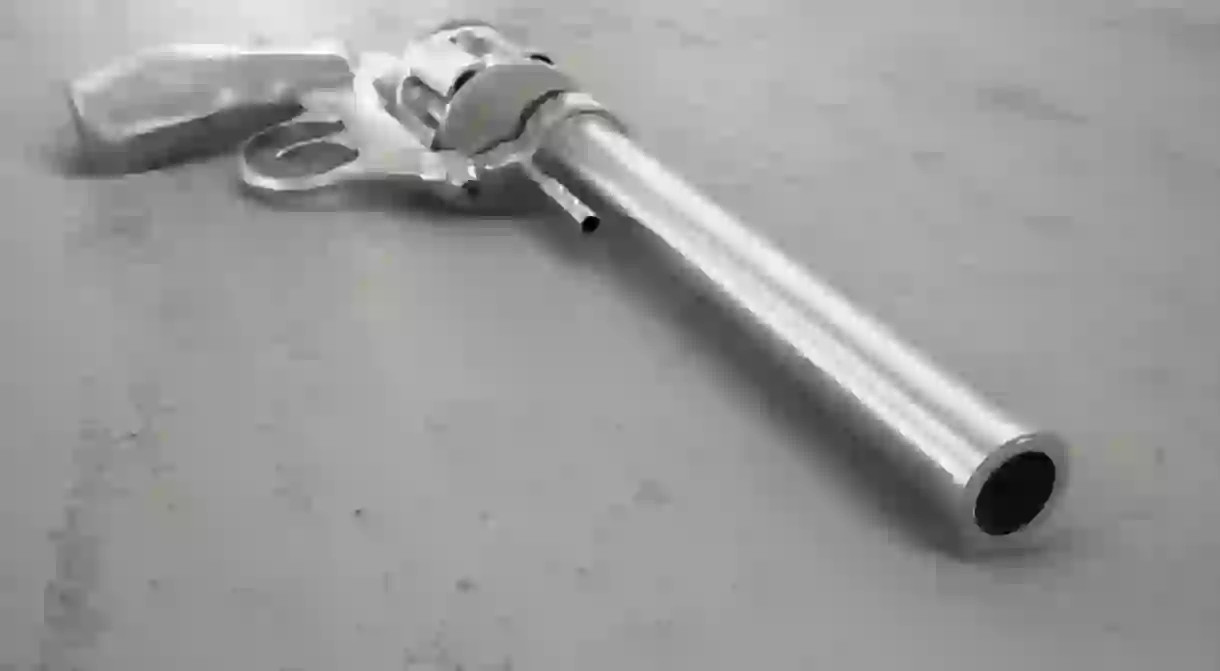Yekaterinburg’s Mafia Gang Warfare of the 1990s

At the fall of the Soviet Union, Russia was catapulted into a new, unstable world where a lack of regulation under Boris Yeltsin left the nation vulnerable. One group of reprobates in particular turned Yekaterinburg, now a World Cup host city, into a criminal den and a bloody battleground. Here’s everything you need to know.
Background
Despite national devastation, Yekaterinburg escaped much of the financial crisis of the early 1990s thanks to the many factories and plants that were relocated to the city during World War II. This comparative financial security attracted a lot of bratki, or mafia, to the city who were on the hunt for personal wealth.
How the mafia came to be
Brothers Gregorii and Konstantin Tsganov met a handful of fellow crooked sportsman while training at the local sports complex, which was sponsored by Uralmash. One of the principal relocated factories, Uralmash was, and still is, one of Russia’s largest firms, a global heavyweight of machinery manufacturers and key to the gang’s development.
Living in the same neighbourhood, the men formed a group and initially established control over private shops and companies in their hood. The gang then expanded into moonshine and quietly began to build their trade.

Uralmash and the gang’s name
In 1991 the Uralmash plant, like most industry at the time, was hit by the financial crisis, and the suspect cohort bailed the eminent factory out of its woes in exchange for property. Bailing out Russia’s industrial giant was a turning point for the gang. Their list of initiatives grew to include racketeering, operating as a protection agency and the group expanded business into the copper industry, energy and communications. They were able to legitimise businesses (eventually entering politics), broadening their control and growing their power.
Now known as the Uralmash Gang, or Uralmashevskie, the brothers and their associates weren’t the only people profiting from the corrupt and lawless 1990s. As they expanded their turf, things started to get messy. By 1992 Yekaterinburg was in the grips of a mafia war.

The development of Uralmashevskie
Internal politics between the Uralmash Gang’s founding members and the crew of gangsters and hoodlums brought in as the group expanded, proved fatal for the newer additions. The founding members presented a united and violent front to anyone who challenged their power and sway.
Drug use, in particular heroin, was also rife during this time, and the Uralmash Gang joined forces with a local vigilante group, City Without Drugs. Perhaps a noble cause in theory, these vigilantes aimed to rid Yekaterinburg of its drug habit. However, they mainly went about beating up and abusing both drug dealers and users adding to the violence on the streets.
Uralmash’s main rivals were the Central Gang, aptly named after their corner of Yekaterinburg. As each group of criminals sought to expand and defend their territory, the violence increased.

Power struggles
These clashes were brutal. Legend has it even machine guns and grenades were used as weapons. As more mobsters fell on either side, the more both sides sought revenge. This vicious circle continued until a Uralmash member shot the Central Gang’s boss while he was in his garden. The number of fatalities was high, and each gang buried their dead in separate cemeteries, either side of the city.
Ostentatious, excessive and plain fascinating, the tombstones marking the resting places of the fallen mafiosi immortalise the deceased in kitsch, full-body portraits, often wearing classic 1990s gangster fashion (tracksuits). The criminals were occasionally portrayed with their car or with their wife or girlfriend, each tombstone a garish send-off, the final extravagance of a life spent in pursuit of personal wealth.













